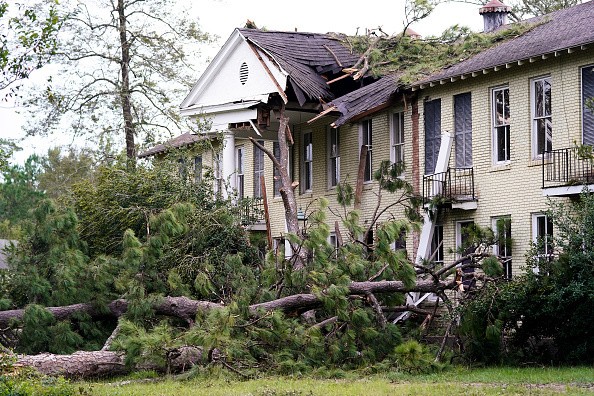
According to the National Weather Service in New York, "a quickly building low-pressure system south of Long Island will likely generate severe rainfall over the region."
From southern New Jersey to northern Massachusetts, flood and flash flood watches are in force.
Developing LPA

This increasing low-pressure system will undoubtedly be responsible for the rain in the Northeast during the following few days. However, it is unclear how powerful it will get and how near it will track to the shore.
"Models will disagree on their solutions whenever two regions of low pressure try to merge in the warm Gulf Stream off the Northeast Coast," CNN meteorologist Chad Myers said.
Forecasters are confident that rain will fall, but they aren't sure how much. As a result, the Weather Prediction Center has assigned a level 1 "marginal" risk for excessive rain on Monday and a level 2 "slight" risk for excessive rain on Tuesday.
"Rainfall totals seem to be on the range of 2 to 4 inches at this time," the New York weather service reported.
However, some computer weather models are predicting 5 to 7 inches of rain in isolated areas.
"Hopefully, this scenario does not play out since it would result in extensive flooding," the New York weather office adds.
Strong Winds and Flood
The second worry is the wind; the closer this storm gets to the Northeast coast, the worse the winds will be for those who live near the beach. Stronger winds will extend deeper inland as the storm gets near.
Wind gusts of more than 50 mph are expected in eastern Massachusetts, Rhode Island, and Connecticut, with gusts reaching hurricane strength on Cape Cod and the Islands.
Coastal flooding may occur as a result of the winds on Tuesday and Wednesday during high tide cycles, according to the weather service.
Perfect Storm
This week marks the 30th anniversary of a similar system made famous by George Clooney in the 1990s. While analysts do not believe this will be "The Perfect Storm," the sorts of events that might be predicted are comparable.
On the anniversary of the storm, the Boston National Weather Service provides an intriguing write-up.
By the weekend, another storm comparable to Tuesday's nor'easter will try to form, according to Myers. "However, the energy for that one is still off the West Coast, and proper forecasting will take some time."
Bomb Cyclone
This storm dubbed the "bomb cyclone" on the West Coast, intensified to become the strongest storm ever measured by pressure off the coast of Washington.
The storm's eye passed directly over an ocean buoy, which recorded the world's largest pressure drop.
A bomb cyclone is defined as a system with a pressure drop of at least 24 mb in 24 hours or less, with the lower the pressure, the greater the storm.
However, as noted in last week's pop-up weather email, the associated "atmospheric river" has influenced the West Coast most.
Extreme Weather

A tight band of concentrated moisture that cruises more than 2 miles over the ocean and dumps rain or snow when it touches land is known as an atmospheric river, and this one was a level 5 of 5.
It has dumped more rain in 24 hours than Sacramento, California, has ever seen in a single day. It's still pouring outside. They had their fourth-wettest day in history in San Francisco.
However, in this drought-stricken region, debris flows and mudslides have had the greatest damage.
For more news about making the environment sustainable, don't forget to follow Nature World News!
© 2025 NatureWorldNews.com All rights reserved. Do not reproduce without permission.





